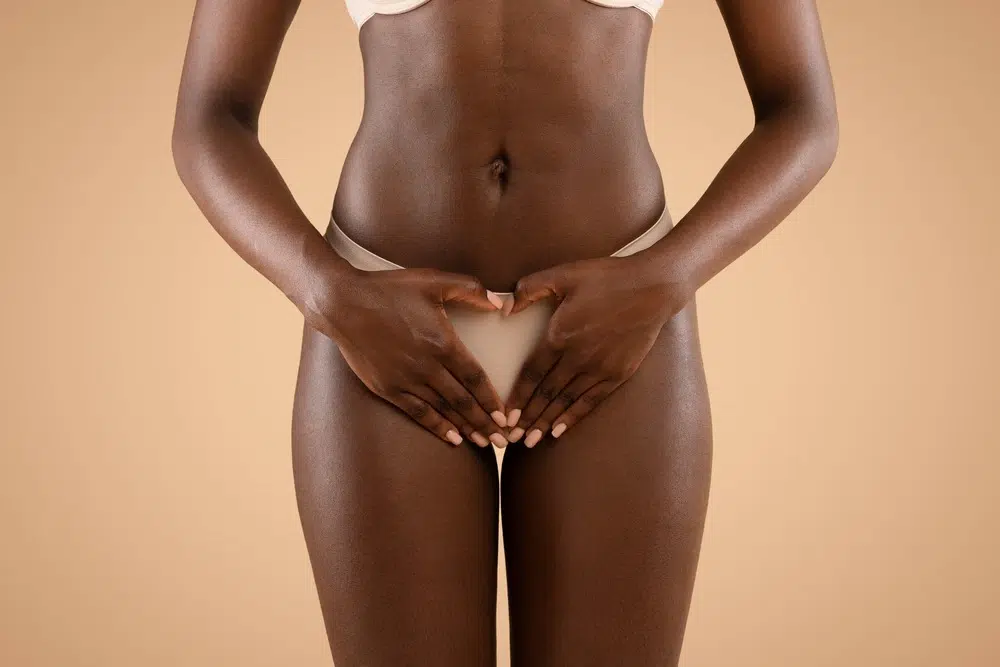- Endometriosis is a condition where the endometrial tissue grows outside of where it is supposed to be, causing pain and discomfort during menstrual cycles.
- Urinary tract infections occur when bacteria make their way into the urinary tract, also causing pain and discomfort, making it feel similar to endometriosis.
- Though they are not directly related, it has been shown that those with endometriosis are more susceptible to developing UTIs.
- Diagnosing and treating UTIs and endometriosis are key to an effective recovery. Misdiagnosis can lead to more pain and issues later on, so it’s important to see a doctor if you’re experiencing these symptoms.
Every time you get your period, your uterus sheds its inner lining–also known as the endometrium. The endometrial tissue can sometimes grow outside of its designated area, leading to an all-too-common condition called endometriosis. Symptoms of endometriosis vary, with pain being one of the most common.
Endometriosis and urinary tract infections (UTIs) are two totally different conditions but the symptoms can sometimes be similar. In rare cases, some women are even diagnosed with endometriosis of the urinary tract or bladder endometriosis, which can cause symptoms that are strikingly similar to that of a UTI.
UTIs are easily treated with antibiotics but endometriosis is a more serious condition. Women with endometriosis are sometimes misdiagnosed with UTIs. For this reason, it is incredibly important to understand the connection between the two and distinguish symptoms so that you can better advocate for yourself when seeking treatment and seeing a doctor to help with the diagnosis of endometriosis or UTI.
Understanding the connection between endometriosis and UTIs is important for anyone who has experienced these conditions. Knowing the differences between symptoms can help you better move forward with treatment by giving you an understanding of what’s going on inside of your body.
Can Endometriosis Cause UTIs?
Although some studies have shown that women with endometriosis suffer from UTIs more frequently than those who do not, endometriosis is not a direct cause of UTI. The symptoms of UTI and endometriosis can be similar which can cause some confusion and uncertainty in terms of diagnosis.
What is Endometriosis?
Endometriosis occurs when the endometrial tissue grows outside of where it is supposed to be. The endometrial tissue is the lining of the uterus and it typically should not be found anywhere else except within the walls of the uterus. However, it can sometimes grow outside of this designated space, leading to uncomfortable symptoms like chronic pelvic pain and other pain symptoms.
The exact cause of endometriosis is not known but it is thought by some experts that it may be related to hormonal imbalances that cause abnormal growth of endometrial tissue.
There also seems to be a strong genetic component to endometriosis. This means that you’re much more likely to have endometriosis if your mother, sister, or another relative has it as well.
Some other common symptoms of endometriosis include:
- Pain during sex
- Heavy menstrual periods
- Severely painful periods
- Nausea
- Fatigue
- Anxiety
- Depression
- Difficulty conceiving
Endometriosis can affect many different body areas. The endometrial tissue often grows to areas that are close to the uterus such as the pelvic floor but it can grow to many different areas of the body.
For this reason, symptoms of endometriosis can vary depending on what part of the body is affected. When comparing UTIs and endometriosis, it is unsurprising that the symptoms of these two very different conditions can be similar in some circumstances. Bladder endometriosis or endometriosis of the urinary tract occurs when the endometrial tissue grows into and around the bladder wall. This can cause bladder pain and painful urination which are symptoms that could easily be confused with a UTI or another type of bladder condition such as bladder pain syndrome or interstitial cystitis.
Currently, the only approach to diagnosis of endometriosis is surgery. A laparoscopic procedure is performed to give the doctor a view of the inside of the uterus and the surrounding area to determine a diagnosis.
What are UTI Symptoms?
Urinary tract infections (UTIs) occur when any area of the urinary tract comes into contact with harmful bacteria, causing an infection. A UTI can affect any part of the urinary tract including the urethra, ureters, bladder, and kidneys. Women are more often affected by UTIs than men but they can happen to men as well.
Common symptoms of UTI include:
- Pain symptoms such as painful urination and pelvic pain
- Difficulty urinating
- Hematuria or blood in the urine
- Urinary frequency
- Low back pain
Symptoms of UTI will vary from person to person. Your doctor can test you for a UTI using a simple urine test. Most UTIs are easily treated with antibiotics and some mild cases may be treatable with natural remedies like d-mannose and cranberry supplements. UTIs that are left untreated can lead to more severe issues like kidney infection so it is important to seek medical attention if you think you may have a UTI.
The Link Between Endometriosis and UTI Symptoms
It is painfully easy for endometriosis symptoms to be mixed up with those of urinary tract infections. The pain that is experienced in and around the lower abdomen and pelvis when you have endometriosis can have the same triggers as pain from a UTI, such as sex or going to the bathroom. However, these two conditions are very different.
Endometriosis is related to the uterus lining and the cause isn’t entirely known. UTIs affect the urinary tract (such as the ureters, urethra, or bladder). The two conditions also have very different risk factors.
Both conditions have treatment options but treating endometriosis is a little trickier than treating a UTI. Treating a UTI usually just involves a round of antibiotics or some natural remedies, like d-mannose or cranberry supplements. Endometriosis treatment can involve hormonal treatments or surgical treatment but these vary with each unique case.
In some rare cases, the endometrial tissue can grow in and around the urinary tract which causes symptoms that are very similar to those experienced with a UTI.
It can take many, many years to reach a diagnosis of endometriosis. One study found that the average time between the onset of symptoms and an accurate diagnosis of endometriosis was 6.7 years. Additionally, many women experience recurrent UTIs, so you can probably see where the symptoms can blend and the diagnosis can become unclear.
Diagnosing Endometriosis and UTIs
Diagnosing endometriosis will start with a physical examination and a detailed review of your medical history. Your doctor may also want to do a pelvic exam and imaging tests such as MRI. However, laparoscopic surgery is the most accurate method for diagnosing endometriosis.
UTIs are diagnosed using simple urine tests in which the urine is tested for any bacteria and other abnormal substances such as blood cells. There are many other infections other than UTIs that commonly affect women, such as yeast infections and bacterial vaginosis. So you should work closely with your doctor to distinguish a clear diagnosis for accurate treatment.
UTIs shouldn’t be left untreated since they can escalate into more serious infections and spread to the kidneys very easily. Because endometriosis symptoms are uncomfortable and can get in the way of day-to-day life, it is important to figure out if you have it when experiencing symptoms of the condition. Endometriosis that is left untreated can lead to infertility.
If you’re experiencing symptoms that could be a UTI or endometriosis and you’re not sure which one it is, you’ll most likely first be screened for a UTI since this is easier to rule out. If the symptoms persist even after the infection is treated or if the UTI test shows that you don’t have an infection, this would warrant further investigation into the cause of the symptoms.
Treating Endometriosis and UTI
A prompt diagnosis and treatment of endometriosis has been found to produce better outcomes for patients. It is important to work closely with your primary healthcare provider or any other specialists you may need (such as a gynecologist or urologist) if you feel that your vaginal health or urinary tract health is not where it should be.
Treating endometriosis focuses on pain management. Sometimes endometriosis does not require treatment when symptoms are mild and there are no fertility problems. Your doctor may recommend hormonal therapy for endometriosis and when pain is severe, surgery is sometimes required.
Hormonal medications help to suppress ovulation to prevent the endometrial tissue from growing any more than it already has. Some treatments for endometriosis focus more on managing symptoms, rather than actually treating the underlying condition. Ongoing treatment may be necessary to manage symptoms and prevent complications.
UTIs are often treated with antibiotics. If you experience recurrent UTIs or if your symptoms are mild, you may benefit from trying a natural remedy like d-mannose or cranberry supplements. Antibiotics are certainly an effective treatment for UTI and are sometimes essential in treating the infection and preventing it from spreading, however, ongoing antibiotic treatment can have negative side effects.
Photo by Priscilla Du Preez on Unsplash
Final Thoughts
Endometriosis is not a direct cause of UTIs. Some studies have found that women with endometriosis suffer from UTIs more frequently. It isn’t uncommon for endometriosis to cause symptoms that are similar to those of a UTI and vice versa. For this reason, it is important to remain informed about your body and any potential conditions you may be experiencing in order to have a clear understanding of what’s going on in your body so that you can best advocate for yourself and find a definitive diagnosis.
Sources
Agarwal, S. K., Chapron, C., Giudice, L. C., Laufer, M. R., Leyland, N., Missmer, S. A., … & Taylor, H. S. (2018). Clinical diagnosis of endometriosis: a call to action. American journal of obstetrics and gynecology, 218(4), 347-e1.
Treloar, S. A., O’Connor, D. T., O’Connor, V. M., Martin, N. G., & Kennedy, S. H. (1999). Genetic influences on endometriosis in an Australian twin sample. issue Human Reproduction, 14(2), 756-760.
Flores-Mireles, A. L., Walker, J. N., Caparon, M., & Hultgren, S. J. (2015). Urinary tract infections: epidemiology, mechanisms of infection and treatment options. Nature Reviews Microbiology, 13(5), 269-284.
Agarwal, S. K., Chapron, C., Giudice, L. C., Laufer, M. R., Leyland, N., Missmer, S. A., … & Taylor, H. S. (2018). Clinical diagnosis of endometriosis: a call to action. American journal of obstetrics and gynecology, 218(4), 411-e1.
Johnson, N. P., Hummelshoj, L., & Adamson, G. D. (2017). Diagnostic criteria for endometriosis: time for a rethink?. Fertility and sterility, 108(4), 730-731.
Nnoaham, K. E., Hummelshoj, L., Webster, P., d’Hooghe, T., de Cicco Nardone, F., de Cicco Nardone, C., … & Zondervan, K. T. (2011). Impact of endometriosis on quality of life and work productivity: a multicenter study across ten countries. Journal of women’s health, 20(10), 1609-1618.




